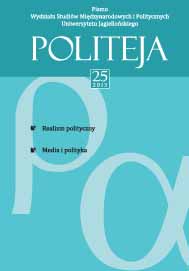W okowach „demokratycznego centralizmu ” – przypadek Stronnictwa Demokratycznego w PRL
In the grip of “democratic centralism” – the case of The Democratic Party in The People Republic of Poland
Author(s): Adrian TyszkiewiczSubject(s): Politics / Political Sciences
Published by: KSIĘGARNIA AKADEMICKA Sp. z o.o.
Keywords: communism; political movements; The Democratic Party; support party; political realism
Summary/Abstract: So–called “democratic centralism”, originally created by W. Lenin, was the main principle used by the communist party (PPR/PZPR) in Poland after the World War II to control the society and its organizations. One of them was a Democratic Party established in the 1939 by the politicians and activists rooted in the left – oriented independence movement, of whom Marshall Józef Piłsudski said to has been the icon and the undisputed leader. After the war the Democratic Party was enslaved by the communists and became the part of the rule system. It was said to be the representative of the systematically vanishing middle class (craftsmen, merchants, intelligence), due to the thesis of Stalin concerning the raging class struggle. Until the fall of the totalitarian system in 1989 the Democratic Party officially supported the communists who overwhelmed every aspect of political reality. That is why the phenomenon of political realism was not involved in its policy despite of being the part of the official propaganda. Nevertheless, in the party structures dwelled the resistance that headed for the independence, of whom Karol Głogowski or Przemysław Górny were the leaders. The Democratic Party conversed in 1989 and supported the first democratic government of Tadeusz Mazowiecki.
Journal: Politeja - Pismo Wydziału Studiów Międzynarodowych i Politycznych Uniwersytetu Jagiellońskiego
- Issue Year: 10/2013
- Issue No: 25
- Page Range: 51-68
- Page Count: 18
- Language: Polish

